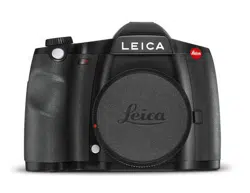Loading ...
Loading ...
Loading ...

EN
62
Care/Storage
CARE/STORAGE
CAMERA HOUSING
• Keep your equipment meticulously clean, as any kind of dirt residue
presents a breeding ground for micro organisms.
• Only clean the camera with a soft, dry cloth. Stubborn dirt should first
be moistened with a watered-down detergent and can then be wiped
away with a dry cloth.
• Wet a soft cloth with tap water, wring it out thoroughly and wipe the
camera clean of any salt water spray. Then wipe it down thoroughly
with a dry cloth.
• Wipe the camera with a clean, lint-free cloth to remove stains and
fingerprints. Tougher dirt in hard to reach corners of the camera
housing can be removed with a small brush. Take care not to touch the
shutter blades.
• Store the camera in a closed and padded container to prevent friction
damage and protect it against dust accumulation.
• Keep the camera in a dry, sufficiently ventilated place, where it will not
be subjected to high temperatures and humidity. Make sure to remove
all moisture from the camera if it was used in humid conditions.
• Do not store the camera in a leather case for extended periods of time
to prevent fungal contamination.
• Empty you camera bag completely if it ever gets wet during use. Your
equipment might otherwise be subjected to moisture and tanning
residue released by the moist leather.
• All mechanical bearings and sliding surfaces on your camera are
lubricated. Remember to press the shutter button several times every
three months to prevent the lubrication points hardening if the camera
will not be used for an extended period of time. We also recommend
repeated adjustment and use of all the other operating elements.
• When using your camera in tropical climates, make sure to expose the
equipment to sunlight and fresh air as much as possible to prevent
fungal growth. Storage in airtight containers or cases is recommended
only in conjunction with a desiccant like silica gel.
LENS
• A soft-bristle brush will usually suffice to remove dust from the outer
lenses. Remove more severe soiling with a clean, soft cloth that is
completely free of foreign matter. Wipe the lens in a circular motion
from the center outward. We recommend using microfiber cloths that
come in a protective container and are available from photography
shops and other optical retailers. These cloths are machine-washable
at 40°C. Do not use fabric softener and do not iron them. Never use
spectacle lens cleaning cloths, as these are soaked in chemicals, which
could damage the glass of the camera lenses.
• Attach a transparent UVA filter for optimal front lens protection in
unfavorable conditions (e.g. sand, salt water spray). Please remember
that the filter may create unwanted light reflections in some backlight
situations and in case of high contrasts.
• The lens caps supplied protect the lens against accidental fingerprint
smudges and rain.
• All mechanical bearings and sliding surfaces on your lens are
lubricated. Make sure to periodically move the focus ring and the
aperture setting ring to prevent seizing if the lens will not be used for
an extended period of time.
VIEWFINDER/LCD PANEL
• Switch off your camera and leave it to stand at room temperature for
around 1 hour if condensation has formed on or in the camera. The
condensation will disappear, once the camera temperature has
reached room temperature.
RECHARGEABLE BATTERY
• Remove the rechargeable battery if the camera will not be used for an
extended period of time, as the date and time setting will be lost latest
after 2 months.
• Lithium-ion rechargeable batteries should only be stored partially
charged, i.e. not fully depleted or fully charged. The camera LCD panel
will show the current charge level of the battery. Charge the battery
twice a year for around 15 minutes to avoid deep discharge in case of
very long storage periods.
MEMORY CARDS
• Make sure to store memory cards in their anti-static container when
not in use.
• Do not store memory cards where they will be exposed to high
temperatures, direct sunlight, magnetic fields or static electricity.
Always remove the memory card if the camera will not be used for an
extended period of time.
• We recommend formatting the memory card from time to time,
because fragmented residual data from deleted files may block some of
its storage capacity.
Loading ...
Loading ...
Loading ...
